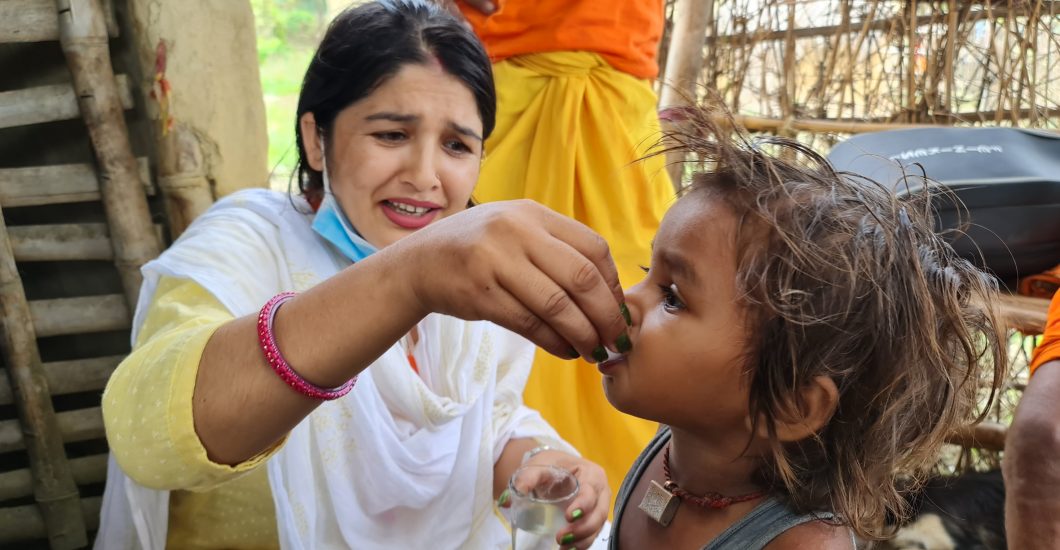Treatment for leprosy
Read about current treatments for leprosy and developments to improve and scale-up preventive treatment.

The World Health Organization estimates that there are 20 million people worldwide living with leprosy (also known as Hansen’s disease).
In most cases of leprosy, the bacteria invade the body through the nose or mouth; however, it can also enter through cuts on your skin if you come into contact with someone who has untreated lesions or sores on their body. The incubation period for leprosy ranges from 2-20 years before symptoms appear. What treatment options are there?
Vaccines for leprosy
There are currently no vaccines available for leprosy. Vaccines for other diseases may provide some protection against leprosy, but it’s not known how long this protection lasts or if it’s enough to prevent infection with M. leprae.
The BCG vaccine (Bacille Calmette-Guerin) has been shown to reduce the severity and duration of leprosy in people who have never had the disease before, but it doesn’t help when given after someone has already become infected with M. leprae.
Leprosy Vaccine: LepVax
While working alongside the Infectious Disease Research Institute in Seattle, Washington, U.S., the American Leprosy Missions (ALM) initiated the development of a leprosy-specific vaccine. The objective of this vaccine is to protect contacts of leprosy patients from the disease and reduce transmission. Investments by multiple partners—including ALM, NLR, and the Leprosy Research Initiative—resulted in LepVax. Up until now, LepVax study results are not only promising for leprosy prevention, but are also showing to be a potential treatment option for leprosy patients.
NLR’s medical director is a member of the LepVax Vaccine Advisory Group, which provides recommendations for the LepVax research trajectory. Vaccine development is a very lengthy trajectory for most diseases. The phase of clinical safety trials of LepVax in healthy human volunteers has finished, and the vaccine is—after a long COVID-19 delay—heading into the next research phase: disseminating it among those most at risk of developing leprosy. Fiocruz, the Institution of Science and Technology in Health in Latin America, based in Rio de Janeiro, Brazil, supports the execution of this new project phase.
Cures for Leprosy
The most effective cure for leprosy is multi-drug therapy (MDT), which involves taking a combination of antibiotics for six to 12 months. Early diagnosis and treatment is important because the longer you have leprosy, the harder it is to treat and the more damage it can do to your body.
If you’ve been diagnosed with leprosy and are starting MDT, make sure that you take all of your medications exactly as prescribed by your doctor. If you miss even one dose, this may cause bacteria in your body to become resistant to treatment.
Treatment for leprosy
Treatment for leprosy is available and effective. It can be given to you in a hospital or clinic, but it’s important to remember that treatment doesn’t get rid of your infection completely. You will need regular follow-up visits with your health worker so that they can check on how well your body is fighting off the bacteria.
The most common methods of treatment include:
Antibiotics – These are drugs that kill bacteria in the body by preventing them from multiplying or damaging their cells. They’re usually taken as pills or injections and may have side effects such as nausea, diarrhea, headaches and rashes (itching).
Pain relief medications – These help relieve symptoms like joint pain and muscle stiffness by reducing inflammation caused by leprosy bacilli attacking nerve endings near joints or muscles
Preventive treatment for leprosy
- Prompt diagnosis and treatment
- Avoid close contact with infected individuals
- Good hygiene practices
Preventive treatment for leprosy is important because it can help prevent the spread of the disease. Leprosy spreads from person to person through droplets from the nose and mouth, which are expelled when talking, sneezing or coughing. People who have been treated for leprosy but still have symptoms should avoid close contact with others until their skin has healed completely (about 6 months after starting treatment).
SDR-PEP: a game-changer in the fight against leprosy
In previous years, public campaigns around elimination of leprosy have focussed on identifying people with leprosy and treating them for the disease. Recent efforts, however, focus on prevention and include activities such as active case finding among close contacts of leprosy patients. These contacts can now be given an antibiotic (rifampicin) that helps to prevent them from developing the disease. This preventive treatment is called post-exposure prophylaxis (SDR-PEP).